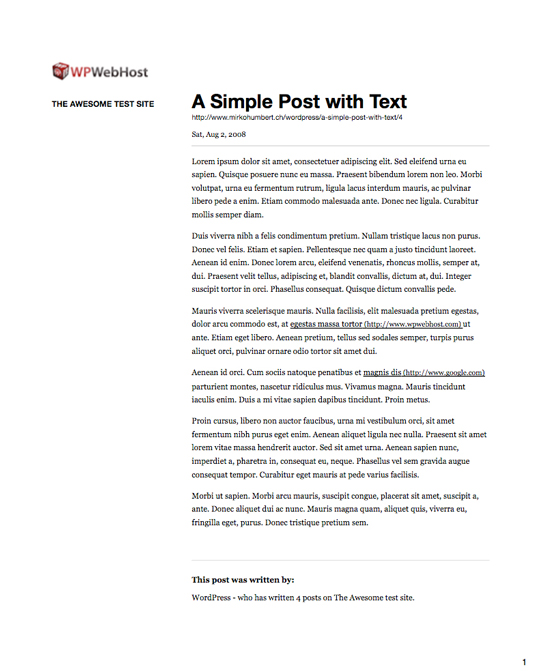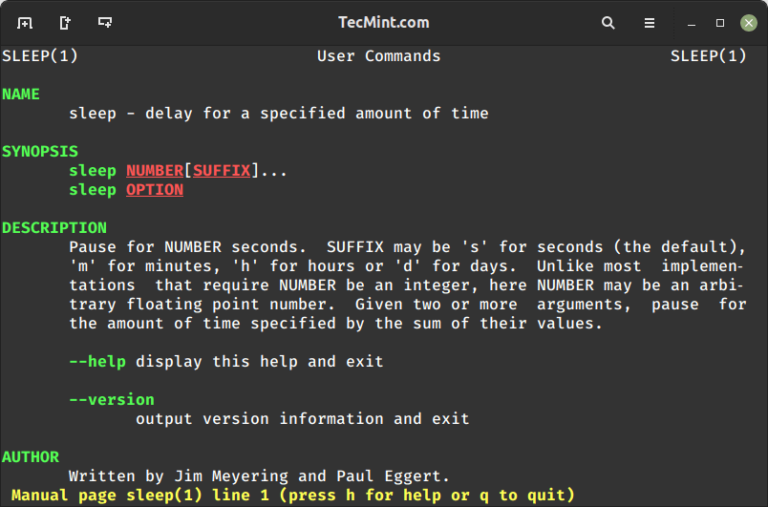Oracle has again proved why it’s a leading player in the database market by releasing its latest version, Oracle Database 23c (code-named “App Simple”), for free on April 3, 2023. This is a bold step by Oracle that will disrupt the database market and make it the go-to database for many people who want to develop and run data-driven apps.
In this blog post, we will delve into the process of installing Oracle Database 23c on RHEL 8 distribution. However, before we embark on the installation journey, let’s understand why Oracle Database 23c (Developer Release) is gaining so much popularity.
What’s New in Oracle Database 23c?
Oracle Database 23c (also known as “Oracle Database Free”) is the most recent long-term support (LTS) version which means it will get support for 10 years. Despite being an LTS version, it is the first time ever that Oracle has released its fully-featured database for free, which makes it appealing to many people.
Another factor that excites developers is that they can use Oracle Database 23c Free-Developer Release for free in production development.
Oracle Database 23c not only includes all the features of Oracle Database 21c but also introduces more than 300 new features and improvements, including:
- Support for microservices, graphs, documents, and relational databases.
- JSON-Relational Duality.
- SQLPlus enhancements.
- New AI and Machine learning capabilities.
- Simple installation and configuration.
- OAuth 2.0 Integration.
- Support for up to 4096 columns in a table.
- Supports all modern data types, data models, and workload types.
Additionally, Oracle Database 23c Free-Developer Release is fully compatible with Oracle Database Enterprise Edition and Oracle Database cloud services, allowing users to easily migrate to any other Oracle Database.
Prerequisites
Oracle Database 23c can be installed as a Docker Image, VirtualBox VM, or as a Linux RPM. Currently, these Linux RPM packages are only compatible with RHEL 8 and Oracle Linux 8.
In this blog, we are using RHEL 8 for the installation of Oracle Database 23c using the RPM package. However, this is an optimized and tested method that can also be used on Oracle Linux 8.
Before beginning with the installation, make sure that your system complies with the minimum requirements for installing Oracle Free Database.
- Make sure you have a running RHEL 8 system, if not, you can obtain one from the official Red Hat website.
- The required RAM for installing Oracle Database Free is 1 GB. Although, 2 GB of RAM is recommended by Oracle.
- You must also have 2 GB of minimum swap space or twice the size of your system’s RAM.
- Your system must have a minimum of 10 GB of disk space.
- You must uninstall any Oracle previously installed Oracle database from your system.
- Finally, you must have root user credentials to proceed with the installation.
Now, let’s get started with the installation of Oracle Database 23c.
Install Oracle Database 23c in RHEL 8
1. First of all, visit the official website of Oracle and download both RPM files (preinstall and database-free) required to install Oracle Database 23c.
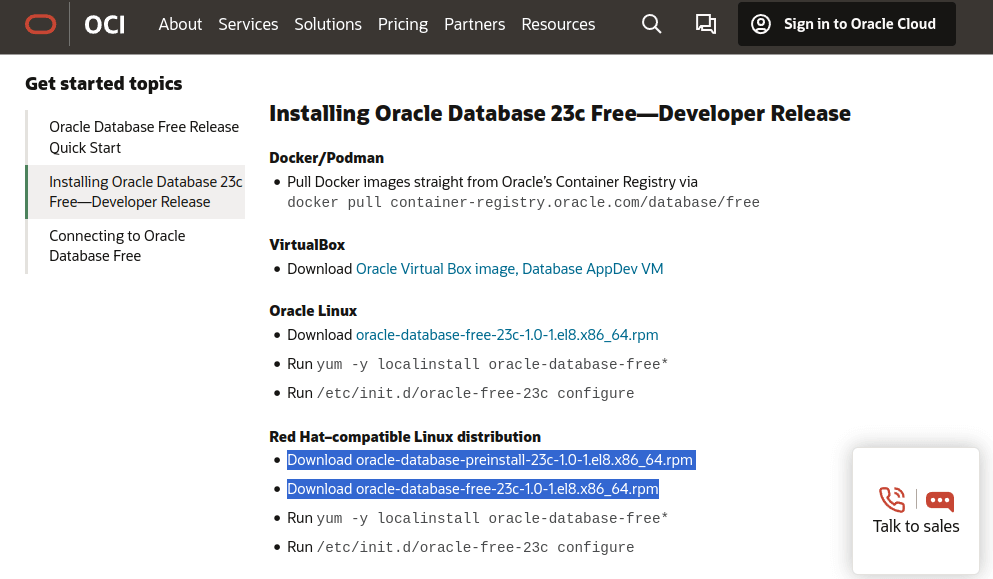
2. Once the RPM files are downloaded, open the terminal and use sudo to log in as root.
sudo -s
3. Next, install the Oracle Database Preinstallation RPM file by running the command stated below.
dnf -y localinstall oracle-database-preinstall-23c-*
The Oracle Database Preinstallation RPM simplifies the process by automatically generating the Oracle installation owner and necessary groups. Additionally, it configures essential kernel settings to meet Oracle Database installation prerequisites.
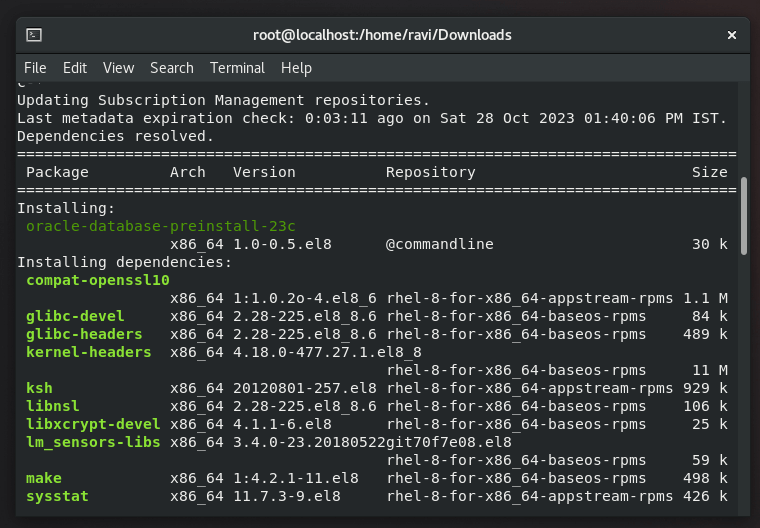
4. Once the system contains all the required prerequisites, you are ready to install Oracle Database 23c by executing the command given below.
dnf -y localinstall oracle-database-free*
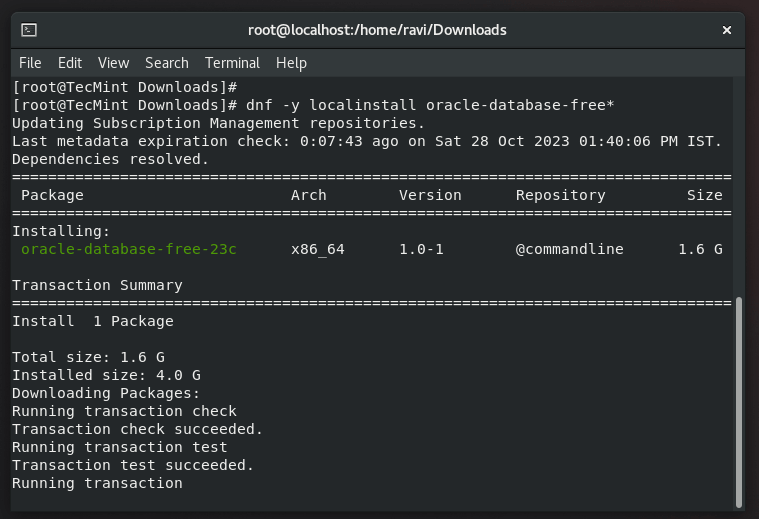
That’s it, your Oracle Database 23c has been successfully installed. Now, let’s proceed to configure it for use
Configure Oracle Database 23c in RHEL 8
Before configuring Oracle Database Free, let’s understand where it resides in your system and some other directories related to it so that you can even view or modify its configuration files in case of need.
- The Oracle Database 23c is installed in the “/opt/oracle/product/23c/dbhomeFree” directory in your system.
- You can modify configuration parameters by editing the file named “oracle-free–23c.conf” in the “/etc/sysconfig/” directory.
- If you wish to look for your database files, you should head to the “/opt/oracle/oradata/FREE” directory.
- If you want to see database creation logs, refer to the “FREE.log” file located in the “/opt/oracle/cfgtoollogs/dbca/FREE” directory.
5. Now that you are aware of some important files and directories related to Oracle Database 23c, now run the service configuration script as shown.
sudo /etc/init.d/oracle-free-23c configure
The above command will configure database services, such as starting the service, creating the database, and configuring the listener.
While at the command prompt, it is advisable to set passwords for the SYS, SYSTEM, and PDBADMIN administrative user accounts.
Oracle strongly suggests that these passwords should meet the following criteria: a minimum of 8 characters in length, comprising at least 1 uppercase letter, 1 lowercase letter, and 1 digit within the range of 0 to 9.
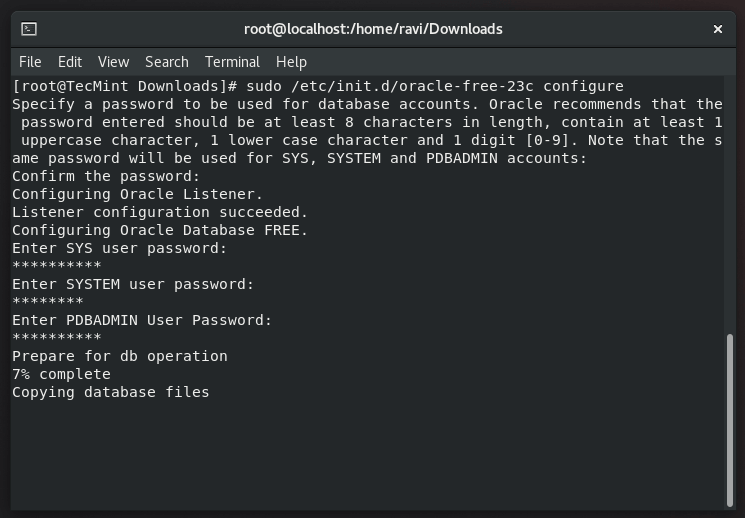
The configuration process may take some time, so there’s no need to worry; just wait for it to complete.
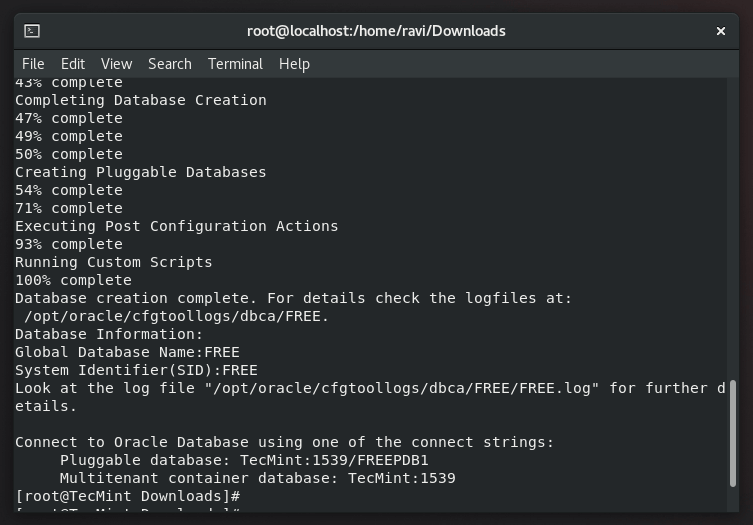
Your Oracle Database Free has been successfully configured. The next step is to establish its environment variable in your Linux system before we can begin using our database.
Set Oracle Database 23c Environment Variables
You can utilize the “oraenv” and “coraenv” scripts to set Oracle Database 23c environment variables on your system. To do so, you must execute the commands mentioned below:
export ORACLE_SID=FREE export ORAENV_ASK=NO . /opt/oracle/product/23c/dbhomeFree/bin/oraenv ORACLE_HOME = [] ? /opt/oracle/product/23c/dbhomeFree

Connect to Oracle Database 23c in RHEL 8
Let’s conclude our blog post by connecting to our Oracle Database Free with SYSDBA privilege by executing the commands mentioned below:
cd $ORACLE_HOME/bin ./sqlplus sys@localhost:1521/FREEPDB1 as sysdba
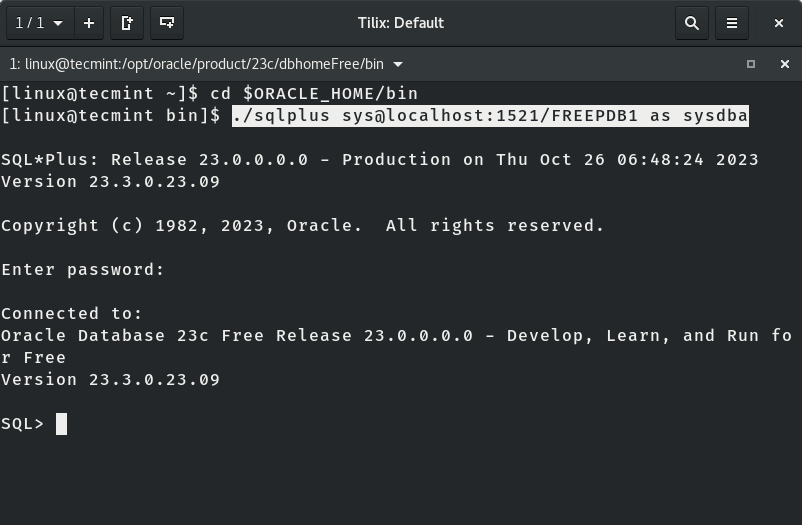
Conclusion
Congratulations! You have successfully installed Oracle Database 23c on your RHEL 8 system. You are now ready to leverage the power of Oracle for your data management needs.
If you encounter any issues during the installation, feel free to consult Oracle’s official documentation or seek support from the Oracle community.



![Psensor – Monitor Linux Hardware Temperature [Motherboard and CPU]](https://hostingmate.net/wp-content/uploads/2024/02/psensor-monitor-linux-hardware-temperature-motherboard-and-cpu-768x240.png)
